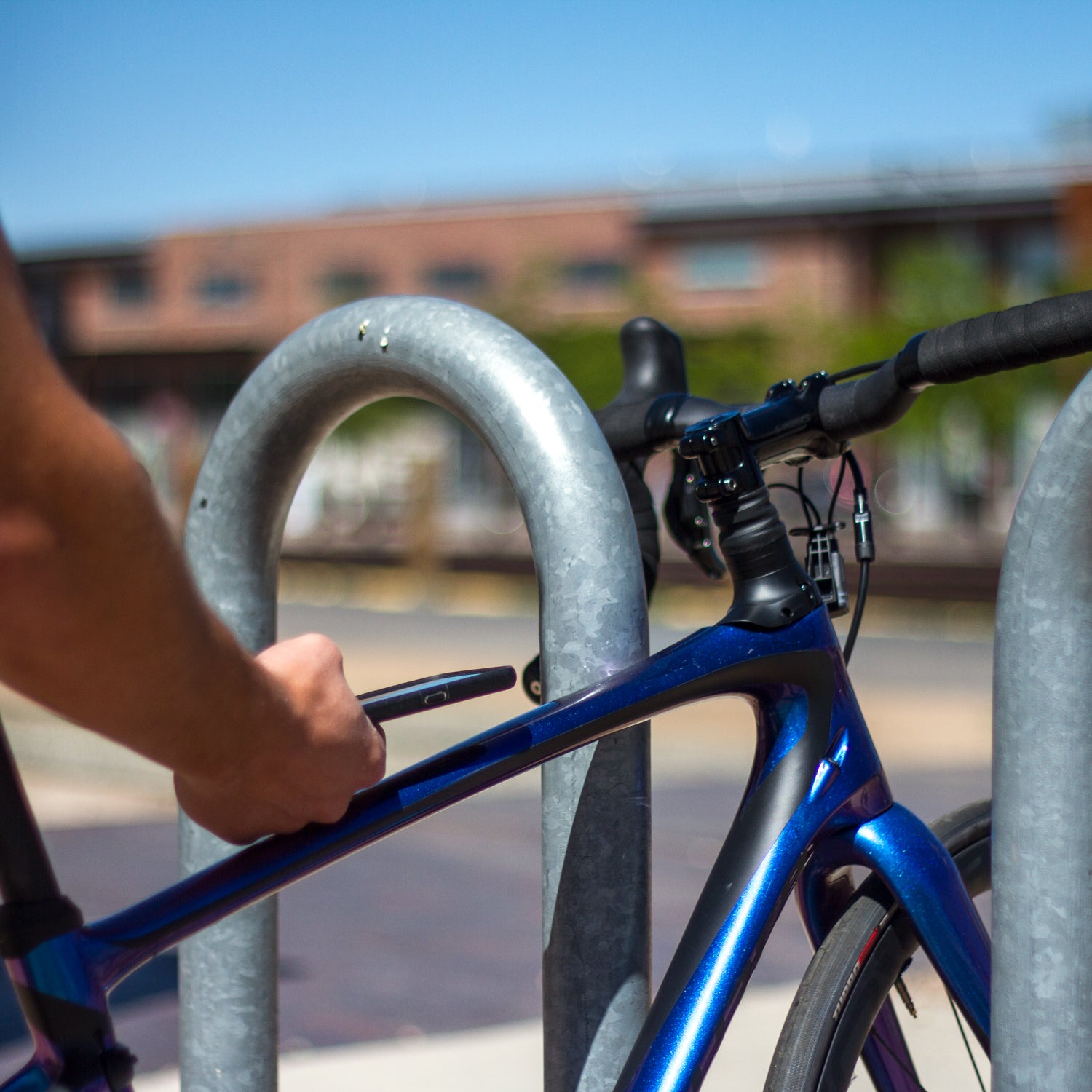Say a thief cuts your lock and steals your bike. The first thing she’ll likely do is scratch off the serial number. Doing so makes it much more difficult to identify, and claim, the bike. Even if you’re able to track down your stolen bike, without a serial number it can be hard to prove that it’s actually yours.
, a tech brand that specializes in product authentication, thinks it has an answer to this problem. The San Diego–based company recently developed a process by which data chips are molded into carbon-fiber frames. To remove the data chip, a thief would have to destroy the frame and thus devalue the bike. VerifiR also partnered with , a Portland-based bike registration service that has cataloged more than 118,000 rigs and recovered nearly 4,000 stolen bikes over the past decade. Together, the two companies see an opportunity to ramp up bicycle-recovery efforts.
“People always ask, ‘I can chip my cat or my dog—why isn’t there something like this for bikes?’” says Bryan Hance, co-founder of Bike Index. “This is what we’ve been waiting for.”
Jurgen Schmerler, CEO of VerifiR, developed a patent-pending process where sheets of carbon are layered around the chip during frame building. The chips, which are about the size of a quarter and require no battery, contain data about the bike’s origin and owner and use near-field communication technology to transmit that information. Anyone with an Android or Windows operating system (the company is currently working to develop iPhone compatibility) can hover their phone a few inches over the chip, and the VerifiR site will automatically load with the owner’s information, no special NFC app required.
So the next time a thief cuts your lock and steals your bike, you report the theft on the VerifiR website, which then triggers the chip to report the theft on all future scans. If a stolen bike is scanned by, for instance, a mechanic or potential buyer, an alert will display on their phone: “This bicycle is registered as stolen. Contact Bike Index to rectify.” Bike Index, in partnership with law enforcement officials, will then use the chip data to find the owner and return the bike.
To be clear, the data chips are not GPS tracking devices that allow an owner to follow a stolen bike’s movements. The bike still has to be found and scanned in person, and it’s hard to know how many users will take that initiative.
Right now, manufacturers are primarily installing the data chips in carbon frames, but Schmerler says similar technology can be applied to aluminum and steel. Aftermarket technology hasn’t yet been developed for cyclists who want to install a chip in the bike they already own, but Schmerler and Hance hope such technology will be developed in the near future.
At this point, Schmerler isn’t revealing which bike companies will be using the technology, but he says several U.S. and European manufacturers—and at least “three major brands”—plan to install the chips. The manufacturers want to make the official announcement, but he says frames with chips should be available to consumers by the end of 2017.
Hance knows the technology isn’t perfect but suspects that chipping is going to make a big difference when it comes to recovering lost rides. “We have a huge, crazy, vibrant community that is kind of nuts about finding and registering bikes,” he says.


